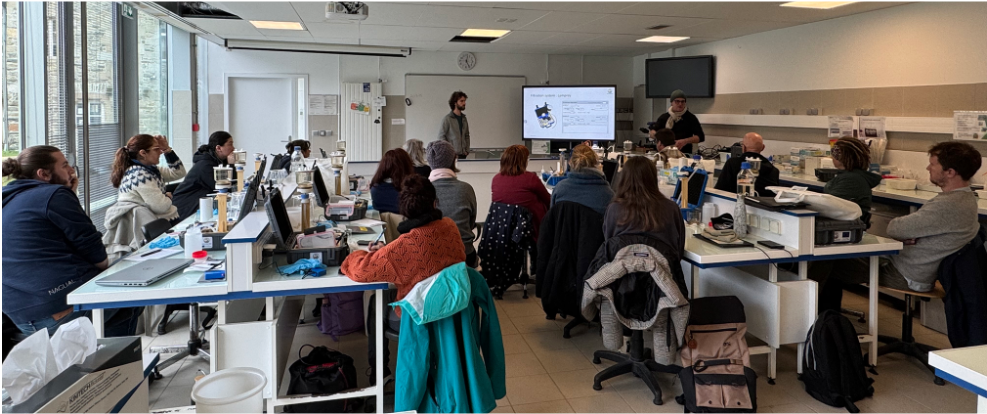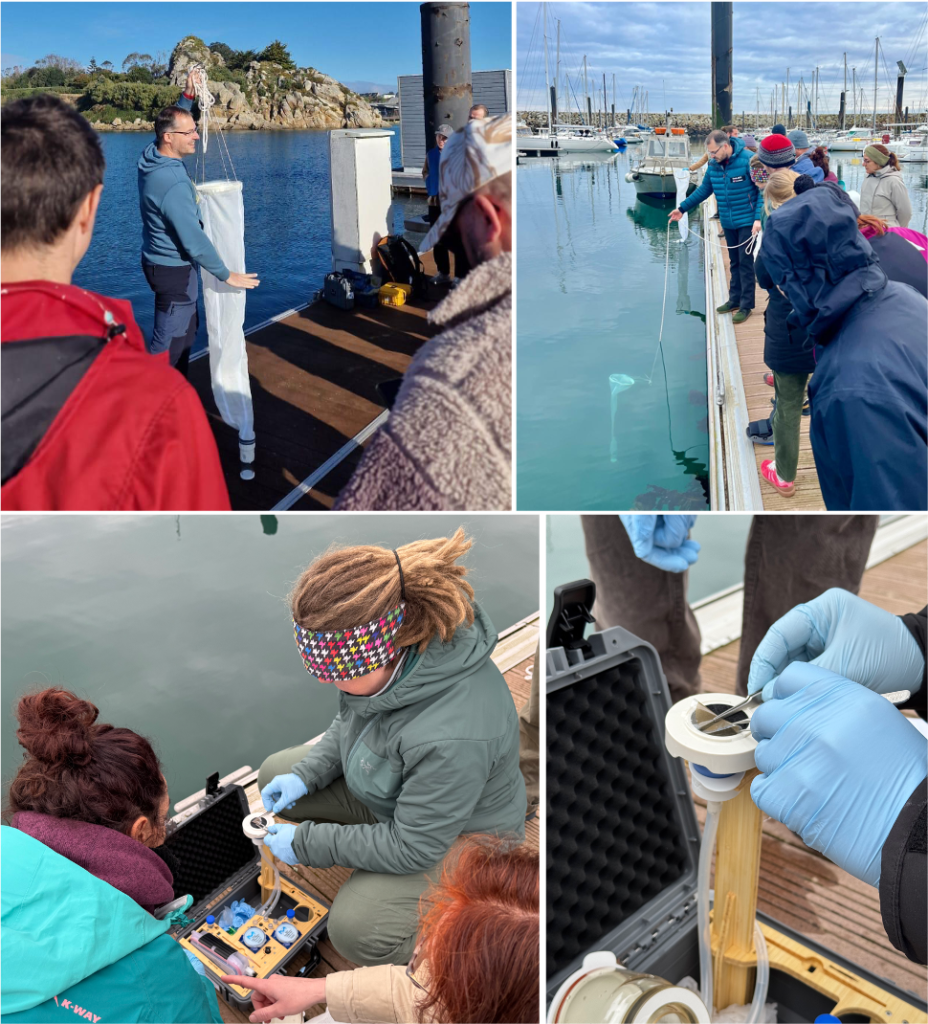BIOcean5D is dedicated to the exploration of marine life and how it changes with space, time and human impact. But the vastness of our Ocean – covering two-thirds of the planet – makes it impossible for marine scientists alone to collect the data needed to achieve that aim.
Citizen science – which involves the general public in research – is a powerful tool, capable of significantly contributing to the collection and analysis of coastal and marine data. Science and society working together in partnership not only furthers scientific knowledge and understanding but also holds immense potential to engage and empower citizens, improve ocean literacy and increase awareness of the challenges facing our Ocean among the general public.
Plankton genetic diversity can now be measured by citizens around Europe thanks to the development of the Lamprey instrument by Noan Le Bescot of SeaLabX in collaboration with the Roscoff Marine Station, within the framework of Plankton Planet. “The Lamprey is an innovative, frugal, cost-effective DNA-kit that measures plankton biodiversity by combining ease-of-use with the generation of quantitative, standardised and reproducible data,” explains Erwan Legeay, environmental genomics engineer at the Roscoff Marine Station. “The vast majority of the ocean’s biomass is made up of plankton; by measuring the diversity of these invisible organisms, we can monitor the state and evolution of the Ocean’s health.”

Seawater is filtered by the Lamprey system by passing the sample through a membrane using a pump. The concentrated plankton biomass accumulated on the membrane is then conserved, and the genetic diversity of the sample is later evaluated using DNA metabarcoding. “Metabarcoding is a powerful tool that enables the identification of multiple species within a single sample by analysis of DNA sequences for short regions of one or a few genes (DNA barcodes),” explains Erwan.
Within the framework of BIOcean5D, 25 Lamprey kits have been distributed to marine laboratories located along the European coastline, in combination with workshops held at the Roscoff Marine Station. These workshops, which took place in November 2024, January and April 2025, provided training in how to use the Lamprey tool. Sampling, data management and analysis were covered, in addition to all associated protocols to ensure the data generated is standardised and comparable. “The workshop participants were impressed with how easy the Lamprey is to use, as well as its lightweight and portable design that will facilitate its integration as a complementary addition to existing research,” explains Erwan. “The workshops were also a great opportunity for the participants to share current activities being undertaken in each laboratory and collectively discuss methodology.”

Participating laboratories will use the Lamprey to contribute to a collective, 1-year marine biodiversity sampling effort. “Plankton nets will be used from the shore to collect samples, with a defined common sampling period and frequency,” explains Erwan. The time series data generated will be stored in public databases and made openly available according to FAIR (Findable, Accessible, Interoperable, Reusable) principles. State-of-the-art bioinformatics workflows will support the visualisation and comparison of data from multiple sites that, together with existing time series data, will enable an unprecedented measurement of the diversity of plankton life along the European coast.

The distributed Lamprey instruments will also be used by the participating laboratories to support citizen initiatives and public engagement activities. Additional Lamprey tools will also be directly distributed by BIOcean5D to marine citizen science projects, such as PlanktoSpace, where the data generated from samples collected using the Lamprey on sailing boats will be linked to satellite measurements of the ocean colour.
Thank you to all the workshop participants for their enthusiasm and ideas and to Damien Guiffant, Erwan Legeay, Morgan Guillam, Nicolas Henry, Colomban de Vargas, Noan Le Bescot, Plankton Planet and Roscoff Marine Station for the organisation, teaching and hosting that made these Lamprey training sessions such a success!